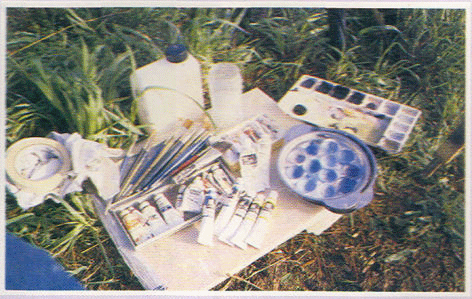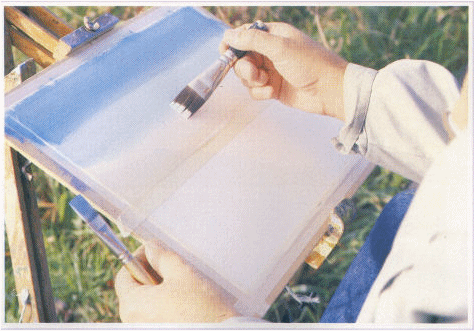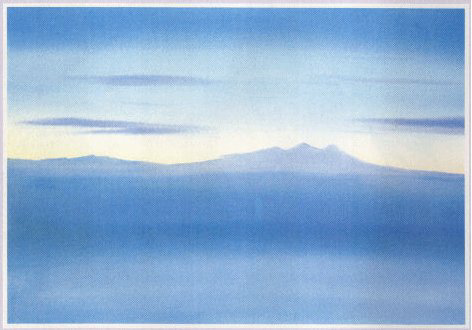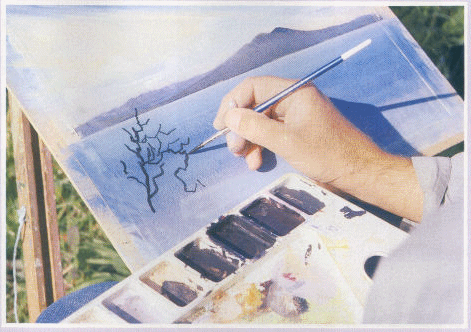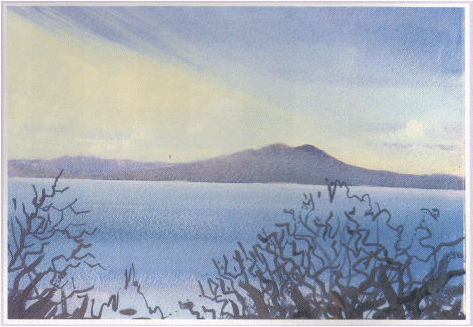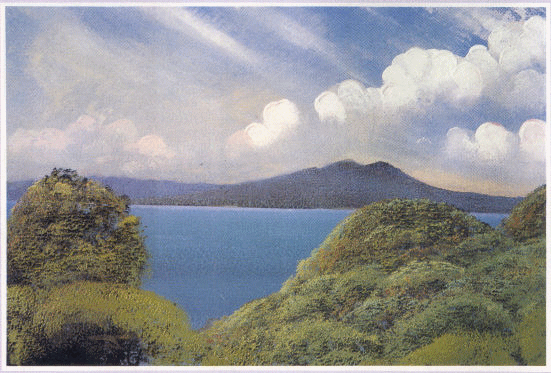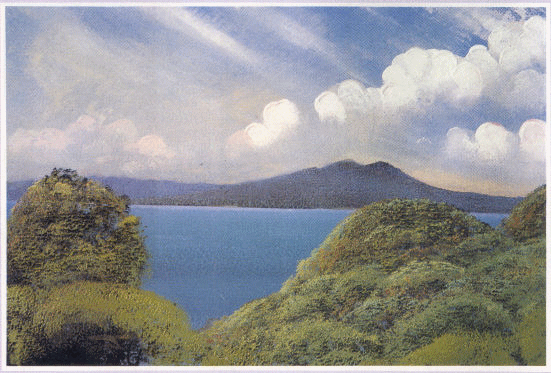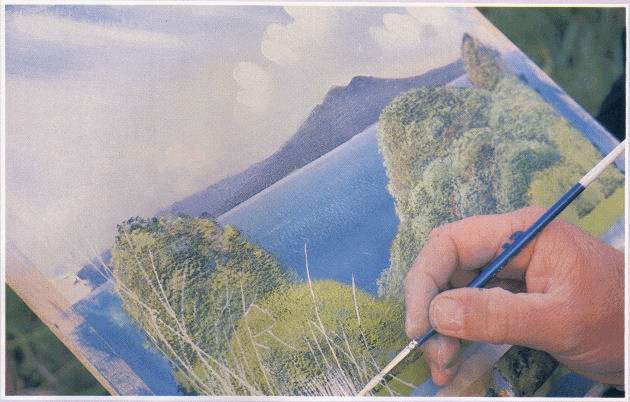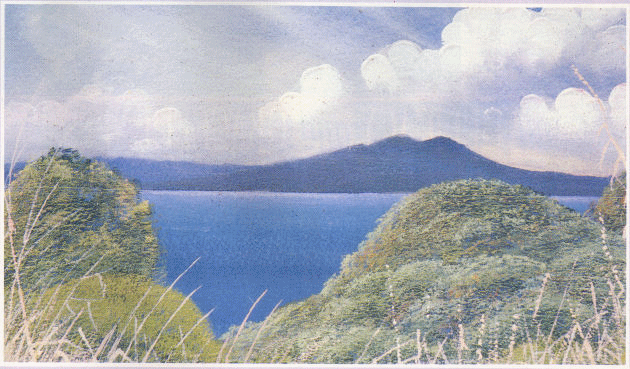I brought with me to New Zealand many paintings of my native Suffolk, much of the equipment used in over 30 years of painting in England, and all the learning achieved in the Suffolk fields.
This is the foundation upon which to build my approach to painting a very different landscape, and already there are notable changes to my technique and palette. Firstly, the scale of the New Zealand landscape has demanded important changes. In Suffolk, I worked on a more intimate scale, on smaller paintings of specified areas of landscape. A view of the east coast bays will encompass many miles and always a huge sky. Landscape here is on a grand scale, and in consequence paintings will become larger. Secondly, my palette is changing and I am introducing more colours.
I am using a range of paints produced in Australia by Art Spectrum which includes colours with names like Tasman blue, Flinders blue violet, Australian leaf green and Pilbara red, designed for use in the southern hemisphere. Thirdly, I am using greater quantities of paint, not simply because of the larger scale of the paintings.
The subject matter itself, a view of the native bush for example, with its vast array of plant forms, demands the applications of thick layers of paint, often with a palette knife.
I work mostly on site in front of the landscape, a practice which presents problems I did not meet in Suffolk. It is not always easy to get into the New Zealand landscape. The often wet and windy sub-tropical climate of this part of New Zealand will impose its own limitations. There are no extremes of temperature, but it rains a great deal and the sun is powerful throughout the year. The bush itself is often impenetrable and is approached by mud tracks which are difficult to negotiate when carrying bulky art equipment.
However, the studio is no substitute to working in front of a living and vibrant landscape. It is not difficult to find a quiet place to work. Even in the suburbs of Auckland, New Zealand’s largest city, there are areas of native bush where it is possible to work undisturbed from dawn until dusk, finding a peace of mind and in turn concentration which I always yearned for in Suffolk.
